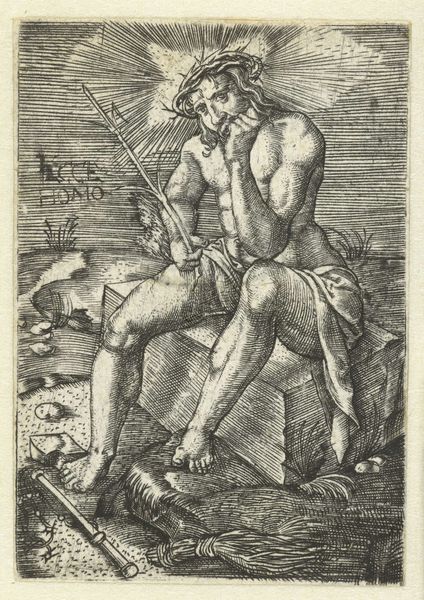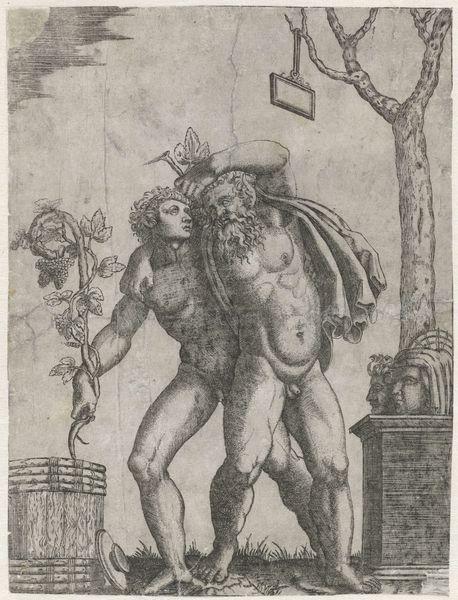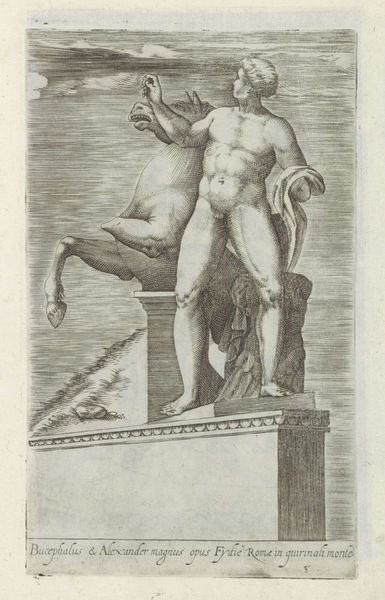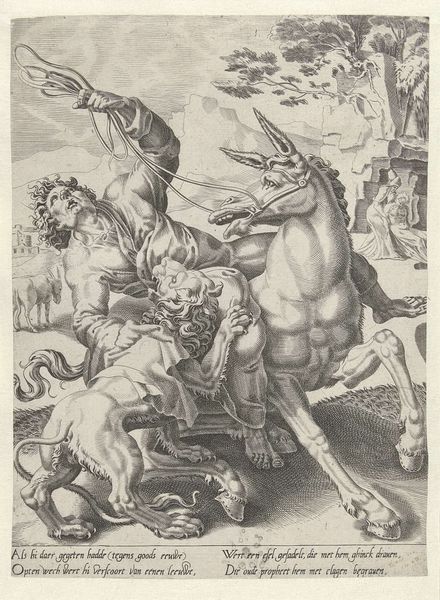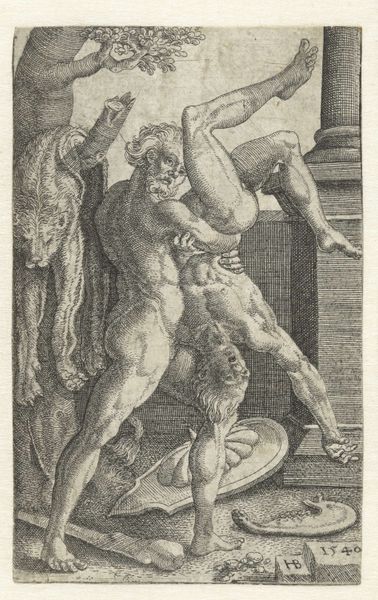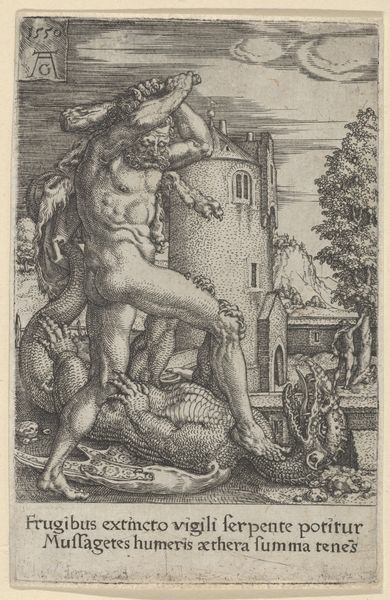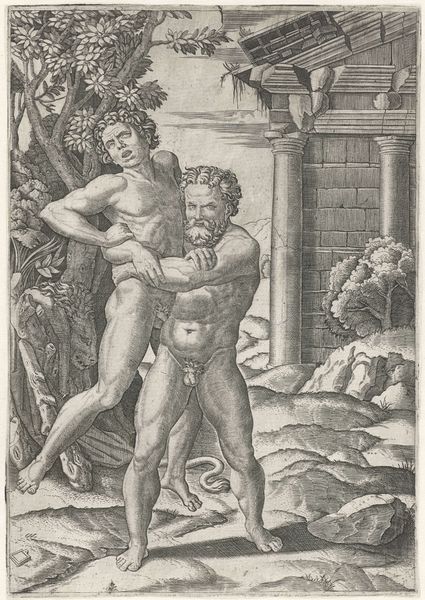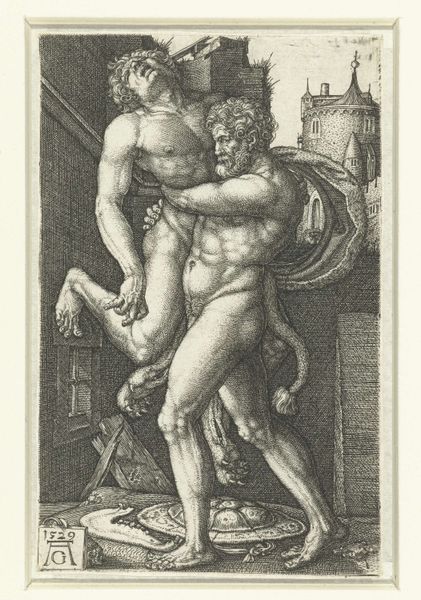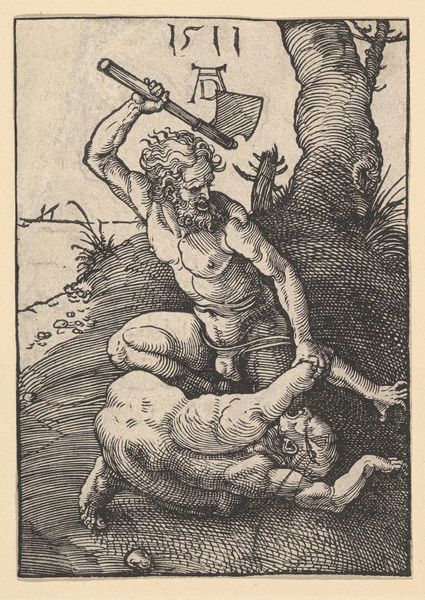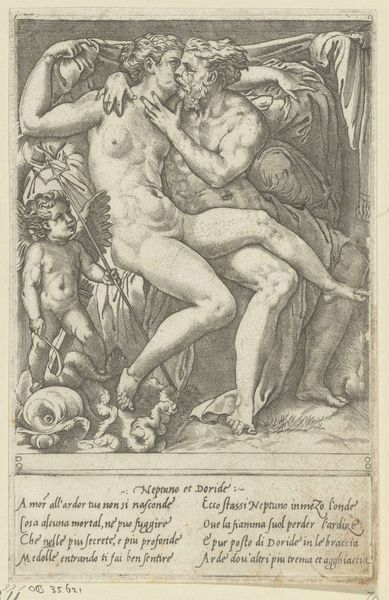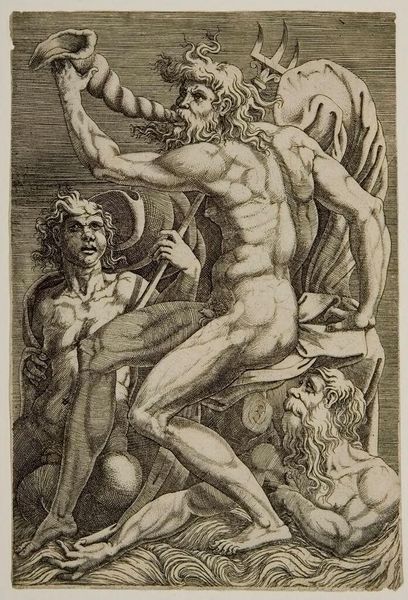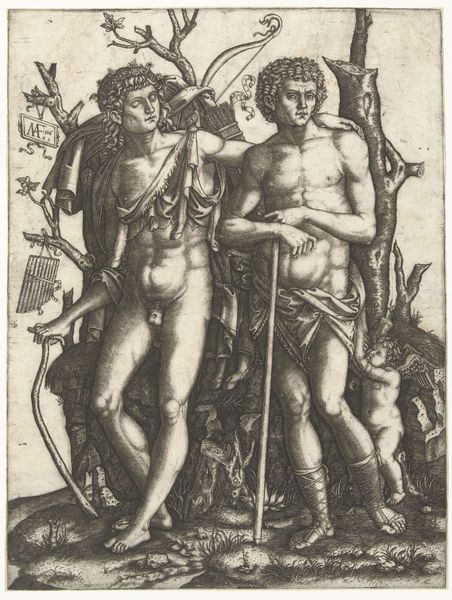
Dimensions: height 165 mm, width 102 mm
Copyright: Rijks Museum: Open Domain
Philips Galle created this engraving, "Riviergod Nilus," in the late 16th century. During this period, there was a growing European fascination with distant lands, often filtered through a lens of colonialism and exoticism. The artwork depicts the river god Nilus, embodying the Nile River, as a muscular, dark-skinned man. Galle’s representation reflects the complex intersection of race, power, and representation in European art. Nilus is accompanied by children, symbolizing fertility and abundance, and is seated on a crocodile, an animal associated with Egypt. The pyramids in the background reinforce the Egyptian setting. Representations like these often served to reinforce a sense of European dominance over foreign lands and peoples, while simultaneously acknowledging the allure and mystery of these cultures. The emotional impact of seeing such a figure is complicated, raising questions about cultural appropriation, the exoticization of non-European cultures, and the power dynamics inherent in representation. "Riviergod Nilus" compels us to consider how historical depictions shape contemporary perceptions of identity, race, and cultural heritage.
Comments
No comments
Be the first to comment and join the conversation on the ultimate creative platform.
